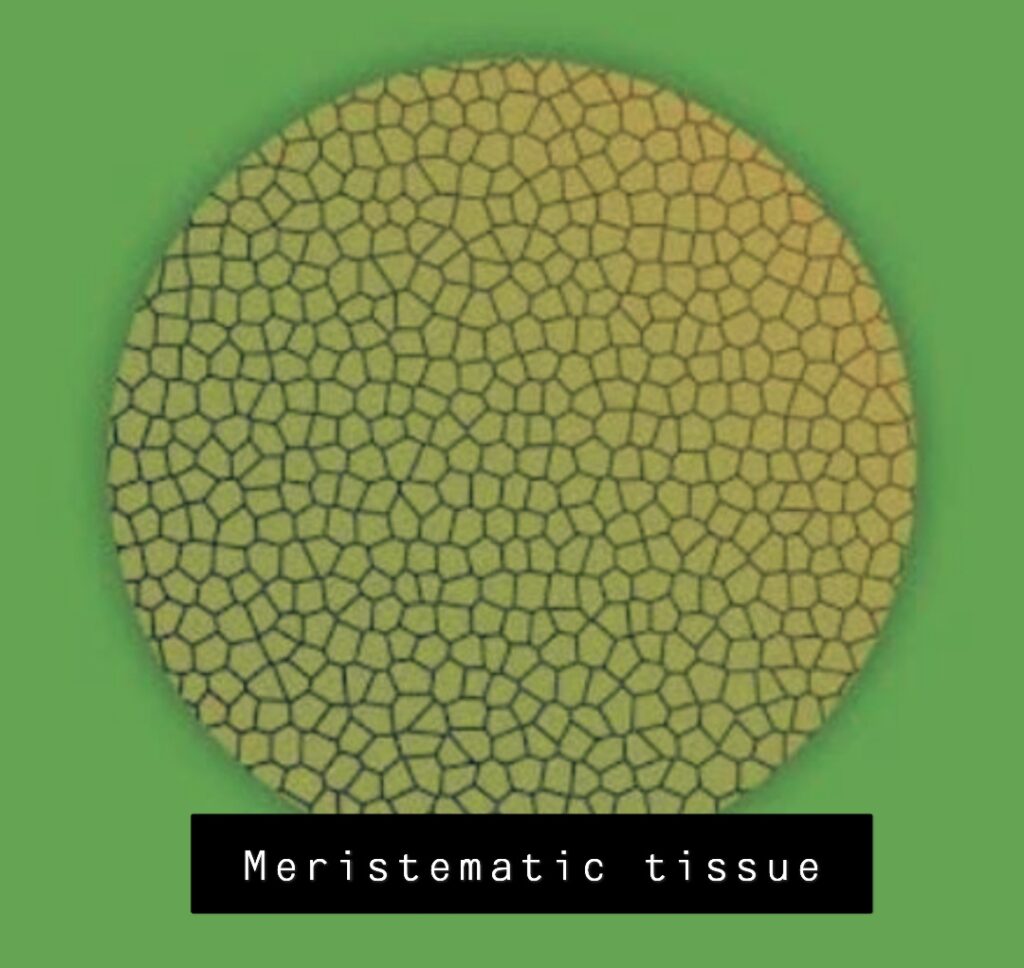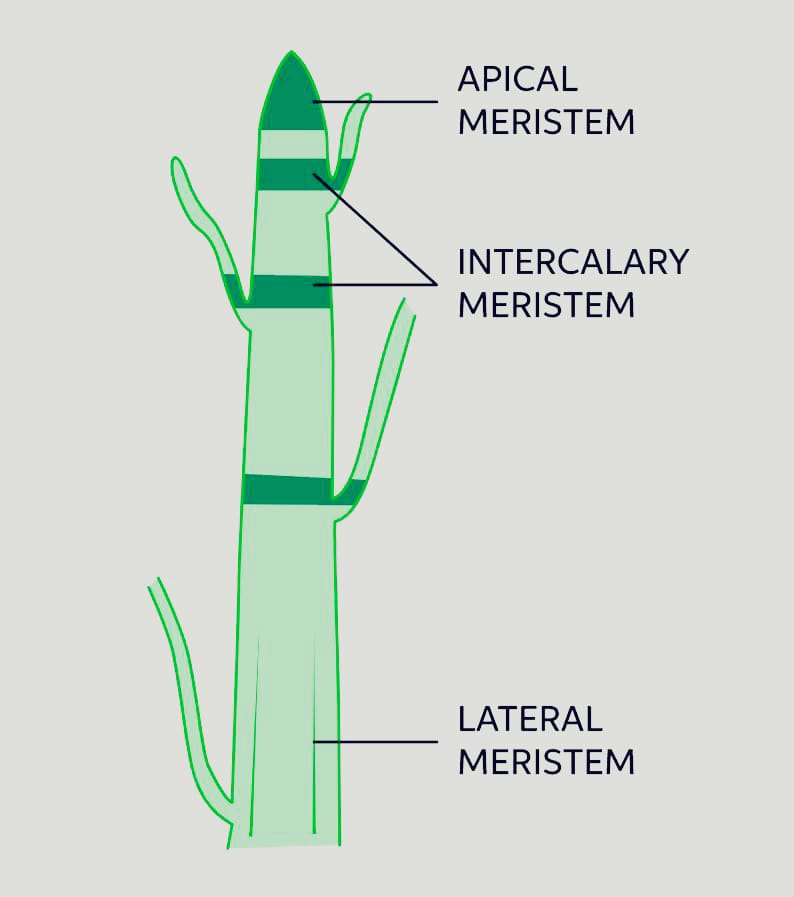Plant tissue with the capacity to actively divide over the course of its life is said to have meristematic tissue. Undifferentiated cells, the constituent parts of the specialized plant structures, are found in meristematic tissue.
- Meristematic Tissues are made up of a variety of shaped live cells. They have a large nucleus without a vacuole. There is no intercellular gap in the cells. The meristem is the region in which these cells are found.
- They have a high level of metabolic activity.
- They have a single, large, and noticeable nucleus.

Types Of Meristematic Tissue
The three forms of meristematic tissues are the apical meristem, intercalary meristem, and lateral meristem.
- Apical Meristem: positioned at the tips of the shoots and roots, which contributes to lengthening.
- Lateral Meristem: Lateral refers to movement from side to side and is a term used to describe the girth (Cambium).
- Intercalary Meristem: placed near the base of the internodes and leaves, which aids in the development of twigs into branches.

Growth
As long as they are alive, meristematic cells helps in the formation of shoots and roots. The main growth promotes the development of some plant organs as well as a specified height for the plant body. Plant organs develop from the division of apical meristem cells, which is followed by cell expansion and differentiation. Peas, Lotus japonicus, soybeans, and other plants are examples of legumes.
For Further Reading:




